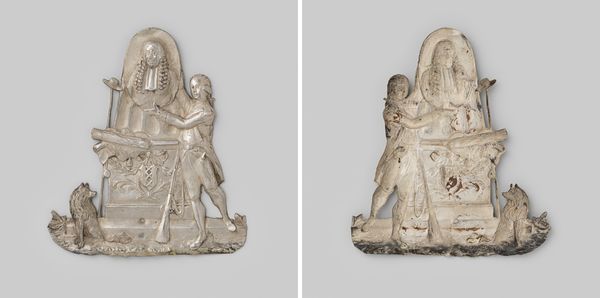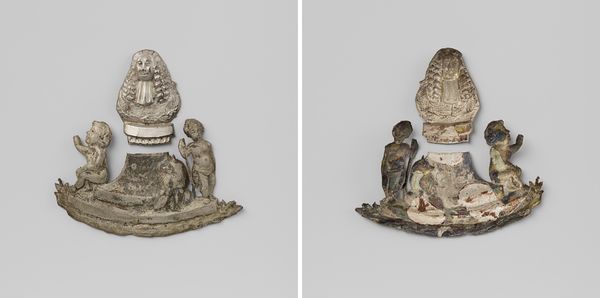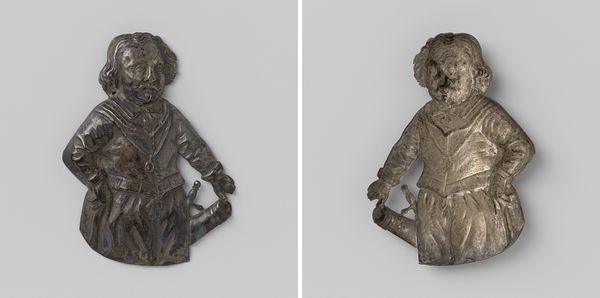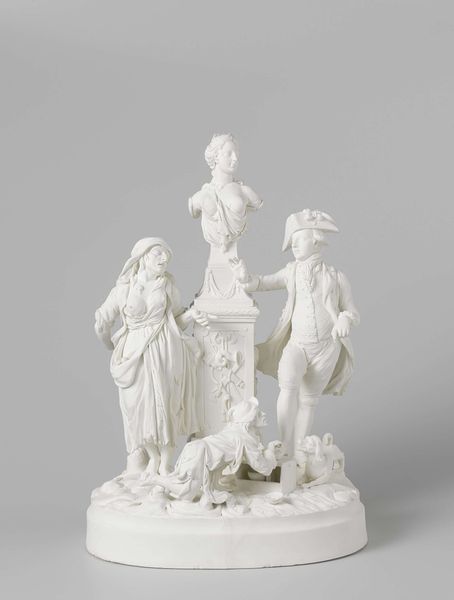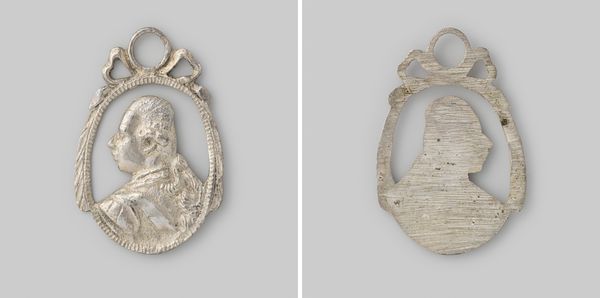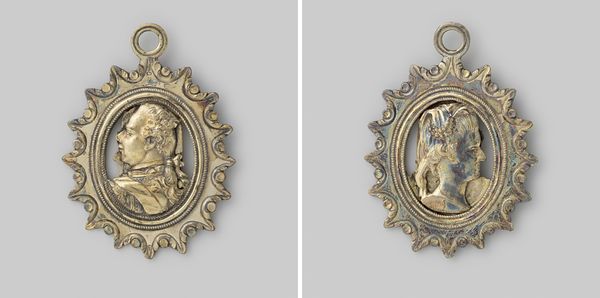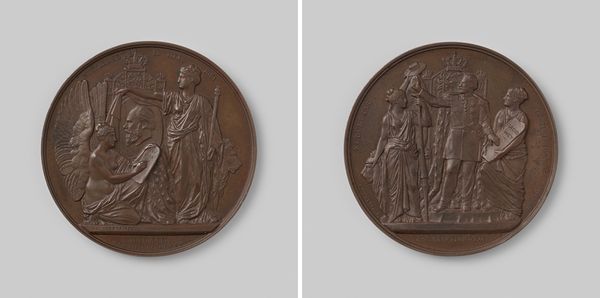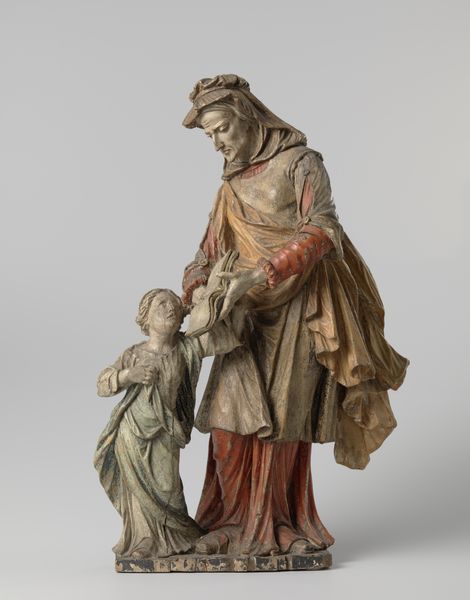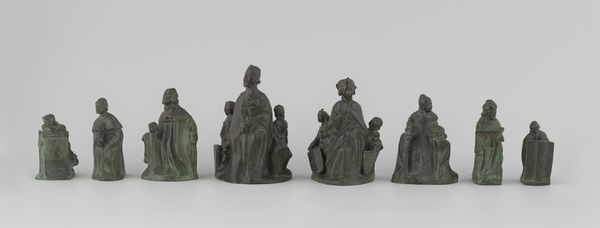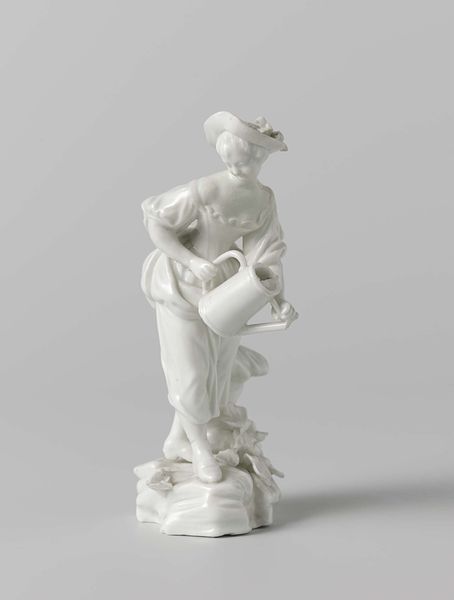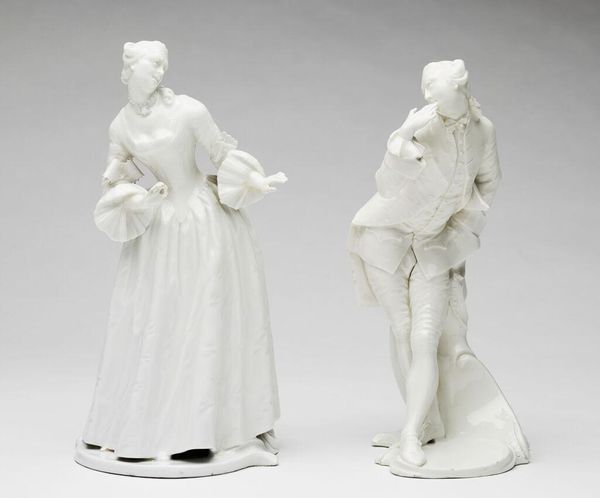
relief, sculpture
#
portrait
#
neoclacissism
#
allegory
#
sculpture
#
relief
#
sculpture
#
history-painting
Dimensions: length 7.3 cm, width 6 cm, weight 2.96 gr
Copyright: Rijks Museum: Open Domain
Editor: Here we have an anonymous relief sculpture from 1795, "Omwenteling te Amsterdam," housed at the Rijksmuseum. The figures have this stoic neoclassical feel. I'm intrigued by the symbolism. How do you interpret this work in its historical context? Curator: This sculpture, commemorating the Batavian Revolution in Amsterdam, presents a potent intersection of politics and allegory. The female figure extending her hand likely represents Freedom or Liberty, offering a triangular symbol representing Equality to the figure on the left, possibly embodying the Dutch Republic, who accepts this "gift" from revolutionary France. What does the broken column on the lower right suggest to you? Editor: It implies the crumbling of an old regime, doesn’t it? It seems the piece champions the overthrow of the old order and embraces new ideals of equality, but I’m wondering who it speaks for? Was this truly a liberation for all inhabitants of the Netherlands? Curator: Precisely. It's vital to critically examine whose narratives are centered. While the revolution brought about ideals of liberty, equality, and fraternity, it also engendered exclusions based on class, religion, and gender. How do you think such limitations reflect upon our understanding of the sculpture today? Editor: I guess it serves as a reminder that revolutions, even those touting progress, are rarely universally beneficial and often leave behind legacies of inequality that must be interrogated. Understanding these complexities definitely provides a more nuanced reading of the work. Curator: Exactly. This piece highlights the complexities inherent in historical representations. By interrogating the narrative presented and exploring whose voices were marginalized, we engage with the sculpture on a deeper, more critical level. Editor: Thanks, I hadn't considered how the sculpture may present a selective view on the Revolution.
Comments
No comments
Be the first to comment and join the conversation on the ultimate creative platform.
